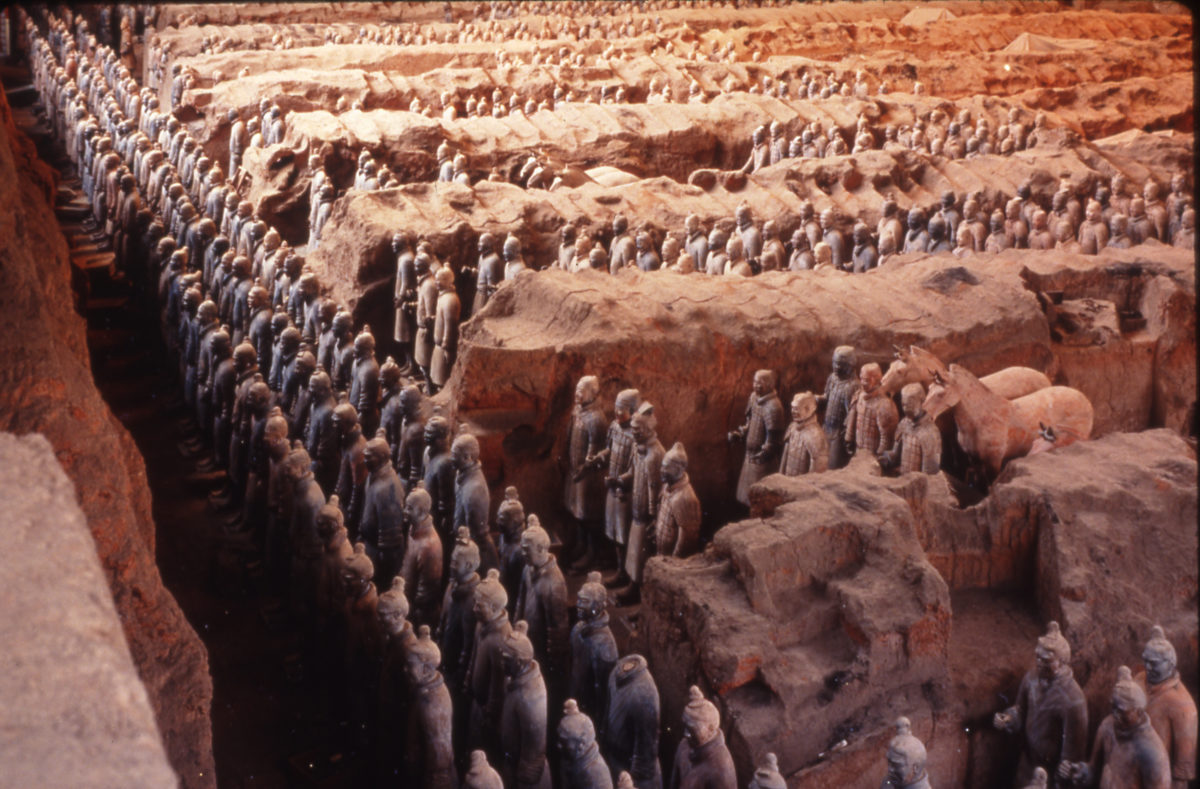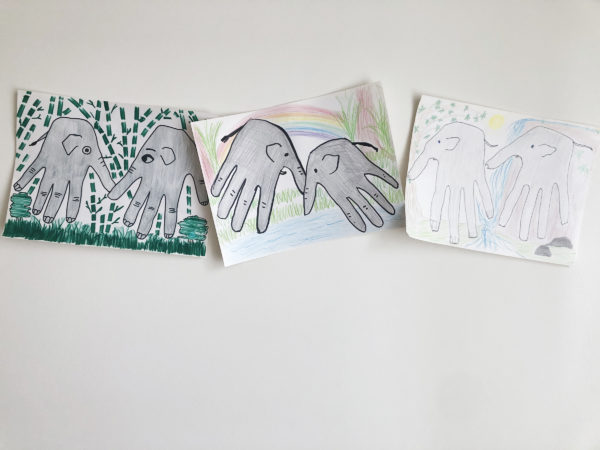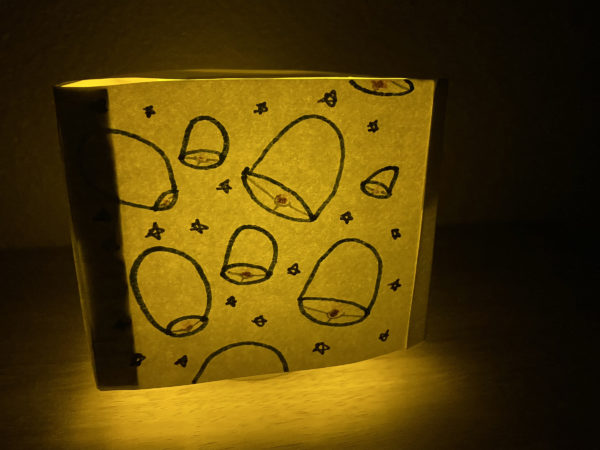Video
The Underground Army of the First Emperor
Just east of the modern city of Xi'an, you can see an army of soldiers unearthed. Discovered first in 1974, the work continues on three pits containing over 7,000 model soldiers. The army was buried within a framework of wooden pillars just east of the large tumulus containing the tomb of the First Emperor. It was a massive undertaking, certainly the largest ceramic project ever undertaken anywhere.

Excavation photo: Underground Army of the First Emperor.
What is the subject of the above photograph?
Here you can see an army of soldiers unearthed just east of the modern city of Xi’an. Discovered first in 1974, the work continues on three pits containing over 7,000 life-size soldiers and over 10,000 weapons. The army was buried within a framework of wooden pillars east of the large tomb mound containing the tomb of the First Emperor. The life-size soldiers are made of terracotta, each one an individual portrait reflecting the diversity of men drawn from all across the Qin empire. They would have originally been brightly painted. Body parts were mass produced from a variety of molds, with heads and limbs added separately before firing. Soldiers carried real weapons including swords, spears and halberds. The pits also included chariots and model horses. It was a massive undertaking, certainly the largest ceramic project ever undertaken anywhere.
Who was the First Emperor?
The First Emperor was born in 259 BCE in the state of Qin, during the Warring States period (475‒221 BCE). He assumed the throne at age 13 as King Zheng of Qin, inheriting a warlike state. By mobilizing a huge army, Qin was able to defeat rival states over a nine-year period. In 221 BCE, Zheng declared himself the First Emperor (Qin Shihuang). He continued to centralize the administration and unite the country by measures designed to standardize currencies, weights, axle widths and the written language. His conquest and harsh laws, however, and the huge conscription of men used to work on massive building projects such as the Great Wall, his palace and burial complex, produced bitter resentment. After his death, his son was unable to stay in power, and the dynasty came to an end in 206 BCE.
How does this tomb differ from others?
The First Emperor’s army and burial complex were part of a grand scheme to recreate the entire world of the court below ground. The pits containing the soldiers also included charioteers and stables. The emperor’s tomb itself (yet to be unearthed) is supposed to contain a working model of the entire palace compound, set with traps to ward off looters. The First Emperor was obsessed with immortality during his reign, so his burial complex was provisioned with all that was important to him on his journey to the next world. Obviously, his army was extremely important, as it was through military conquest that he built his empire. The burial complex also signalled a direction towards the use of ceramic models as stand-ins for sacrificial victims, a process that had begun earlier, but reached gigantic proportions here. The use of ceramic models of soldier armies continued into the Han dynasty. Tombs continued to be filled with objects representing real things, and the ability to prepare such a burial complex would, in the Han dynasty, become the dream of an increasingly broader segment of society.
The First Emperor’s burial complex is a spectacular find, but many questions remain unanswered:
- Why was the First Emperor so obsessed with immortality and defence–even in death?
- What do you suppose lies in his tomb and why do you think the Chinese have not opened it yet?
- What effect did the creation of the First Emperor’s terracotta army have on burial customs after his dynasty?






